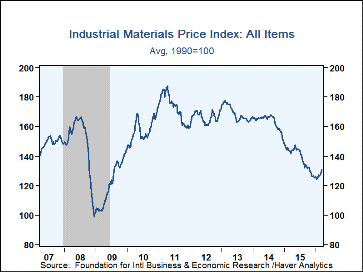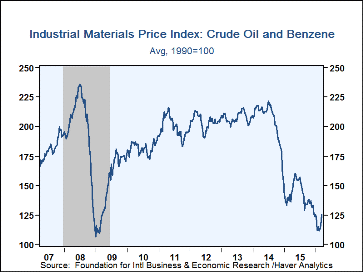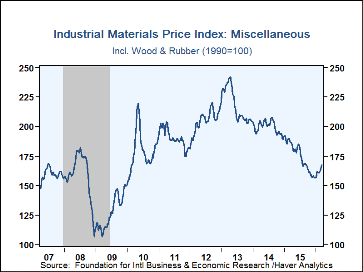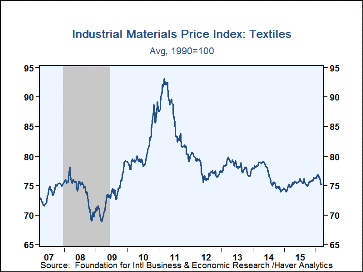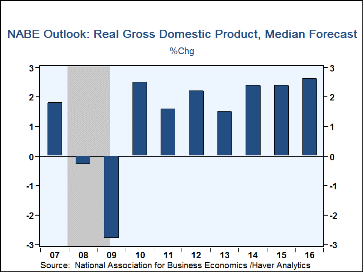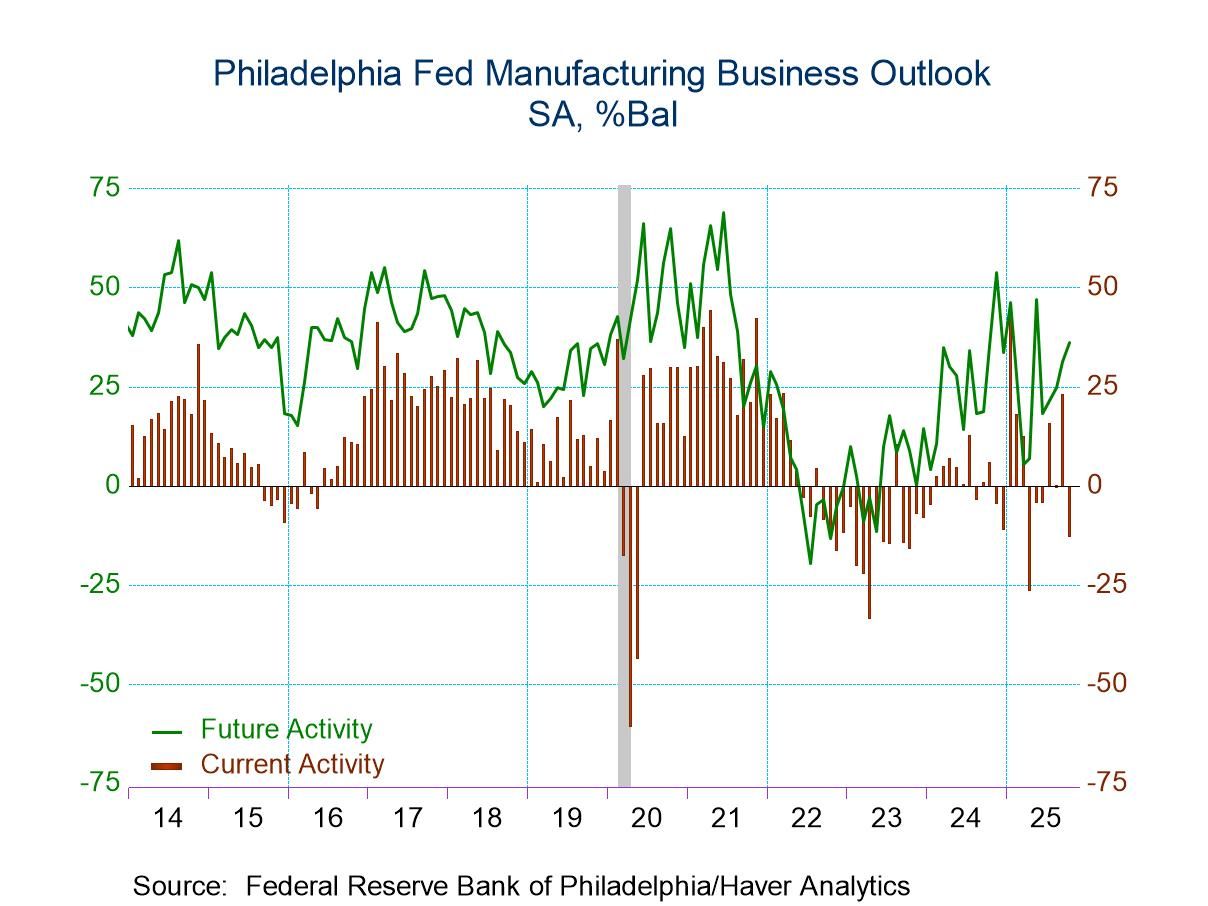 Global| Mar 14 2016
Global| Mar 14 2016FIBER: Industrial Commodity Prices Continue to Rise
by:Tom Moeller
|in:Economy in Brief
Summary
Recent improvement in factory sector production has strengthened industrial commodity prices. The industrial price index from the Foundation for International Business and Economic Research (FIBER) increased 3.7% during the last four [...]
Recent improvement in factory sector production has strengthened industrial commodity prices. The industrial price index from the Foundation for International Business and Economic Research (FIBER) increased 3.7% during the last four weeks. Nevertheless, prices remained down 8.4% during the past year as worldwide factory output remained under pressure.
Within the sector groupings of prices, the FIBER indexes showed gains for most products. In the crude oil & benzene area, the cost of WTI crude oil jumped to $37.37 per barrel last week, up 30.0% in from the cycle low four weeks ago. Prices for the petro-chemical benzene also strengthened 11.6% last month, but remained down 13.5% y/y. In the metals sector, copper scrap prices improved 8.8%, but remained off 14.8% y/y. Aluminum prices also bounced 5.2% higher (-10.1% y/). Steel scrap prices continued to fall, however, by 1.2% last month and by roughly one-quarter y/y. In the miscellaneous price grouping, natural rubber prices jumped 17.1% m/m and were up roughly one-quarter from the January low. Framing lumber prices also showed strength and improved 2.3% m/m. Prices for structural panels similarly gained 1.5% m/m, but were 7.2% lower than a year earlier. Prices in the textile sector have shown little strength. Cotton prices declined 4.5% m/m and were down 6.8% y/y. On the strong-side have been burlap prices, up roughly one-third y/y.
Overall, commodity prices could improve further. The current industrial output projection from the National Association for Business Economics calls for 2.2% U.S. production growth in 2016, up from 1.5% growth in 2015. During the last ten years, there has been a 52% correlation between the three-month change in prices and the change in industrial output.
Commodity price data can be found in Haver's DAILY, WEEKLY, USECON and CMDTY databases.
| FIBER Industrial Materials Price Index (1990=100) | 1-Mth % | 3-Mth % | 6-Mth % | 12-Mth % | 2015 % | 2014 % | 2013 % |
|---|---|---|---|---|---|---|---|
| All Items | 3.7 | 4.1 | -2.1 | -8.4 | -16.3 | -10.0 | -2.9 |
| Textiles | -1.5 | -11.9 | 0.1 | 0.8 | 2.2 | -4.2 | 0.4 |
| Cotton (cents per pound) | -4.5 | -1.0 | -8.3 | -6.8 | 2.6 | -24.2 | 10.8 |
| Metals | 3.4 | 10.4 | -4.1 | -12.3 | -27.8 | -8.7 | -3.5 |
| Aluminum ($ per metric ton) | 5.2 | 6.3 | -1.5 | -10.1 | -19.2 | 9.4 | -15.8 |
| Copper Scrap (cents per pound) | 8.8 | 7.7 | -6.7 | -14.8 | -27.0 | -12.0 | -6.8 |
| Steel Scrap ($ per ton) | -1.2 | 18.3 | -21.5 | -27.0 | -53.8 | -18.6 | 8.4 |
| Crude Oil & Benzene | 12.6 | -2.1 | -6.4 | -12.1 | -19.4 | -26.5 | 0.8 |
| Crude Oil (WTI, $ per Barrel) | 30.0 | -0.9 | -17.1 | -23.2 | -35.8 | -43.2 | 10.3 |
| Miscellaneous | 4.2 | 6.5 | 0.1 | -10.3 | -18.0 | -6.7 | -6.8 |
| Framing Lumber ($ per 1000 board ft.) | 2.3 | 1.3 | 6.0 | -7.3 | -16.4 | -1.6 | 3.5 |
| Natural Rubber (cents per pound) | 17.1 | 13.4 | 9.2 | -11.5 | -22.5 | -32.3 | -9.8 |
Tom Moeller
AuthorMore in Author Profile »Prior to joining Haver Analytics in 2000, Mr. Moeller worked as the Economist at Chancellor Capital Management from 1985 to 1999. There, he developed comprehensive economic forecasts and interpreted economic data for equity and fixed income portfolio managers. Also at Chancellor, Mr. Moeller worked as an equity analyst and was responsible for researching and rating companies in the economically sensitive automobile and housing industries for investment in Chancellor’s equity portfolio. Prior to joining Chancellor, Mr. Moeller was an Economist at Citibank from 1979 to 1984. He also analyzed pricing behavior in the metals industry for the Council on Wage and Price Stability in Washington, D.C. In 1999, Mr. Moeller received the award for most accurate forecast from the Forecasters' Club of New York. From 1990 to 1992 he was President of the New York Association for Business Economists. Mr. Moeller earned an M.B.A. in Finance from Fordham University, where he graduated in 1987. He holds a Bachelor of Arts in Economics from George Washington University.


